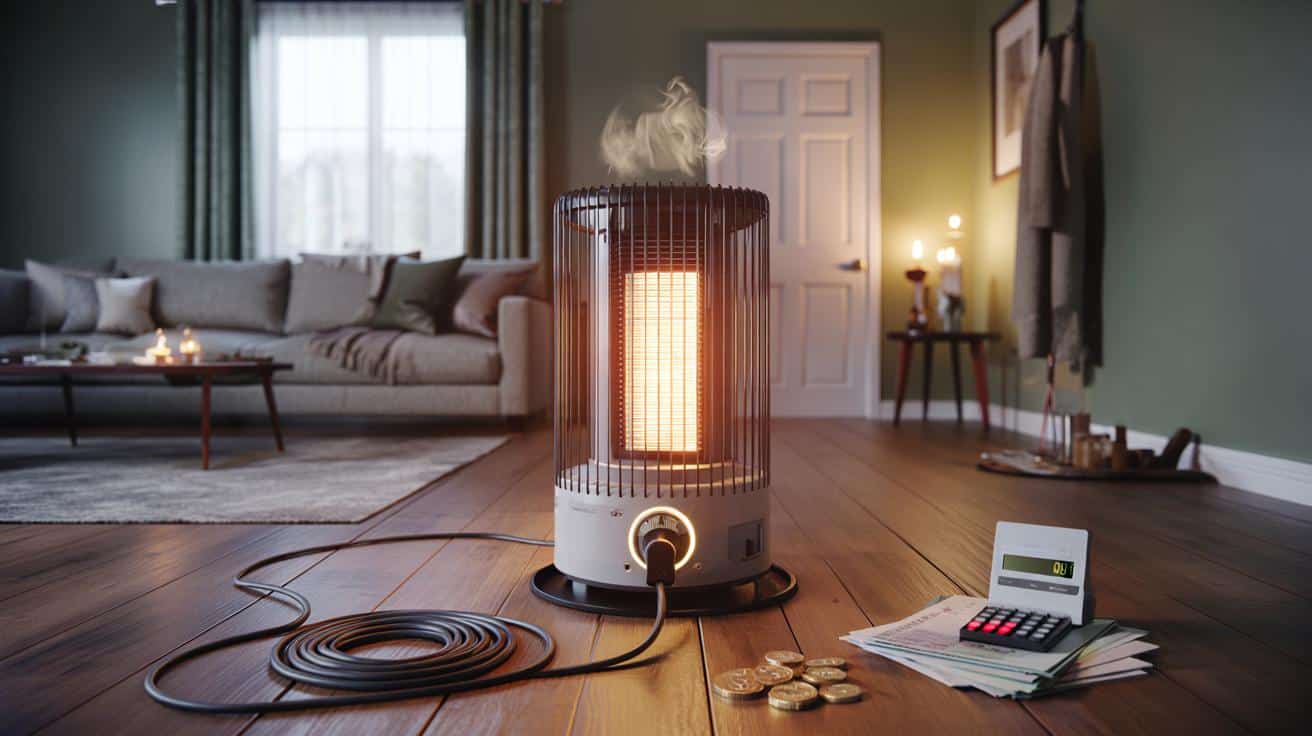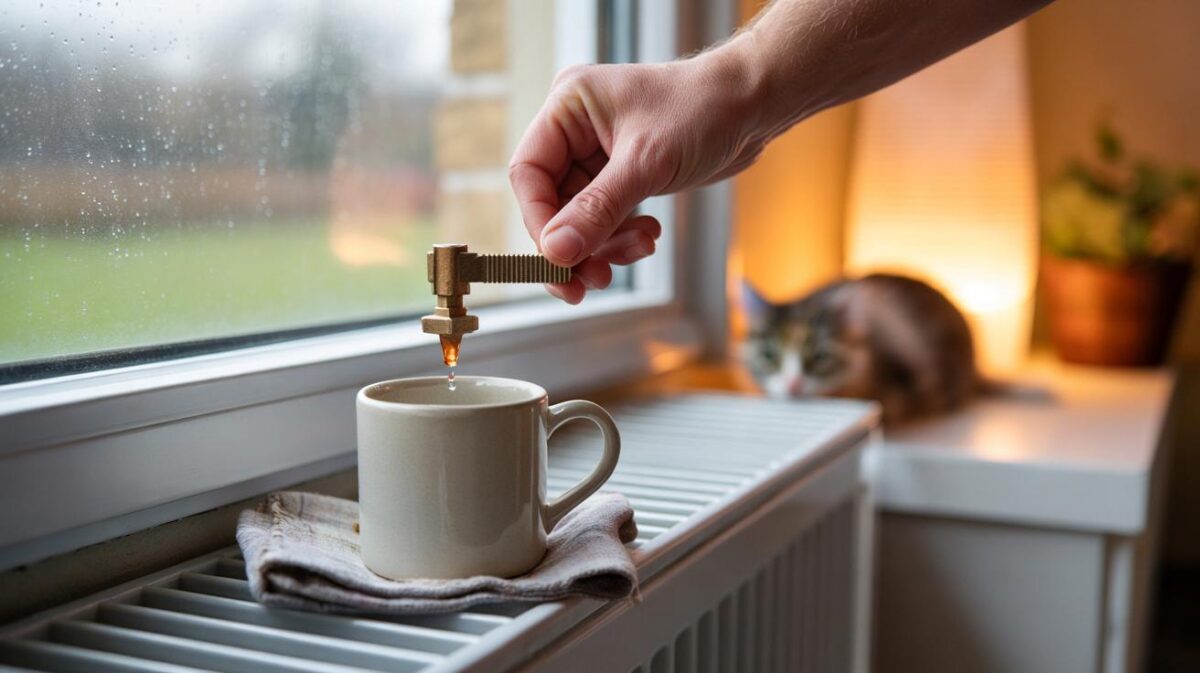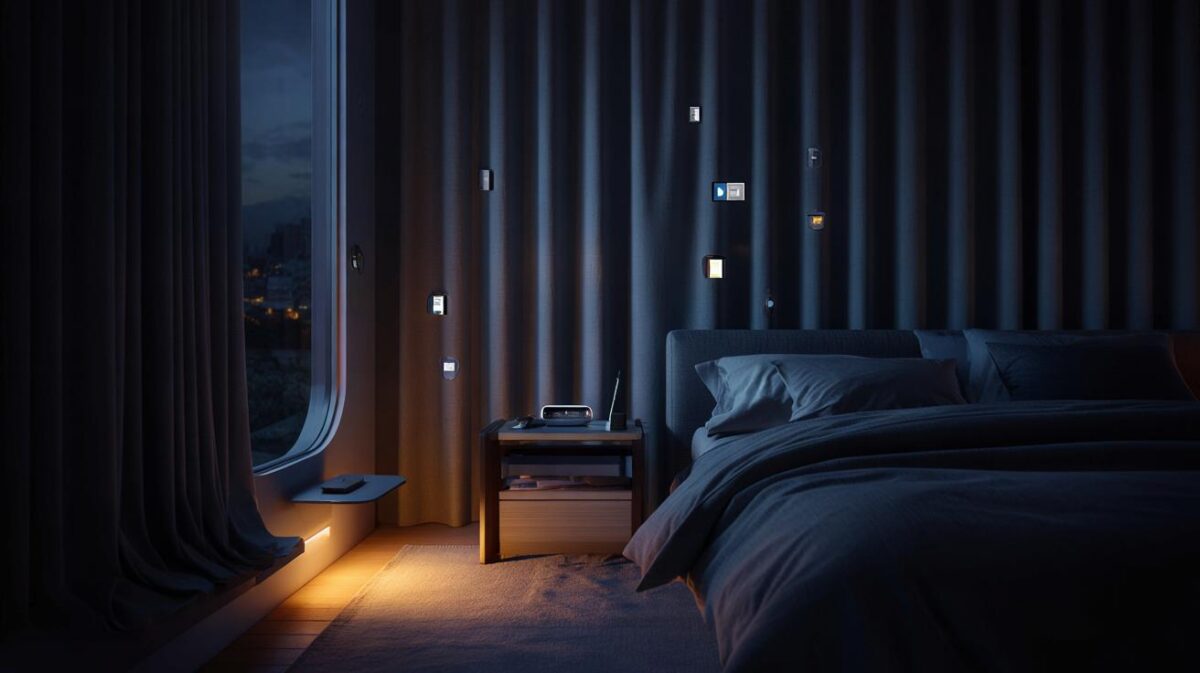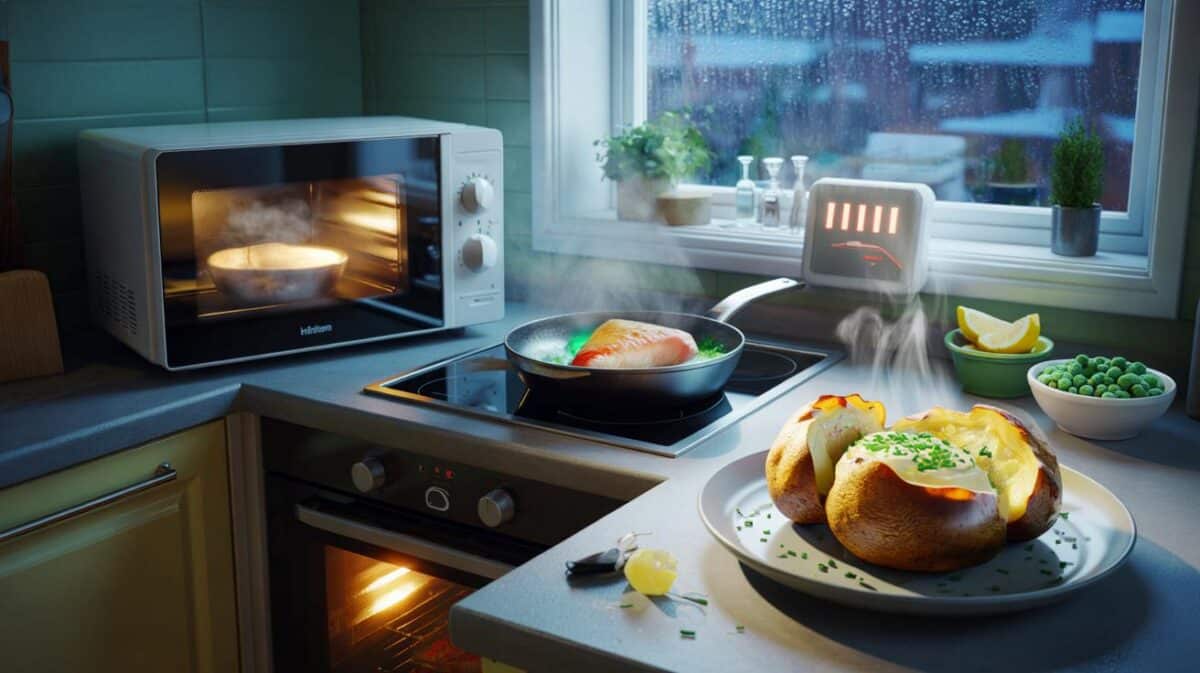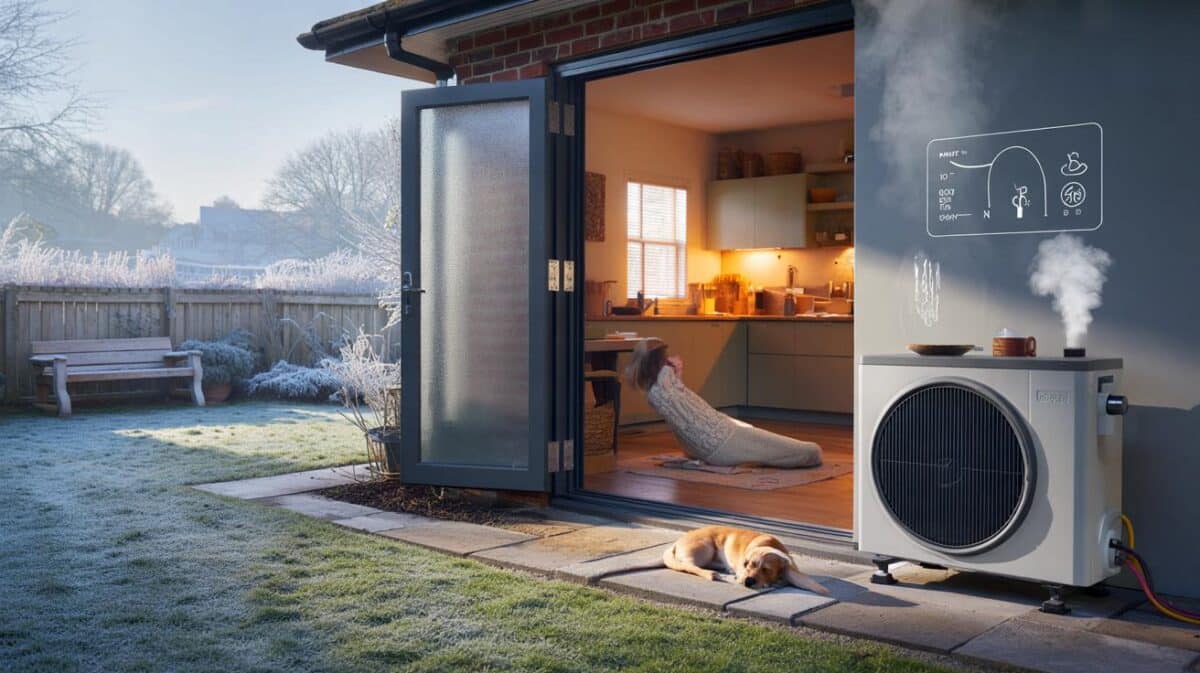Space heaters promise quick warmth on a cold night, yet they’re involved in some of the costliest and most avoidable home disasters. The tricky bit isn’t just fire. It’s wiring, warranties, and small print that can turn one cosy shortcut into a very expensive mistake.
Steam from a kettle, breath hanging in the air, that first blast of heat on your shins — it felt harmless. The cord felt warmer than I liked.
On the side table sat a stack of bills and a scented candle nobody lit anymore. The heater hummed, then the lights dipped for a heartbeat, as if the room took a sharp inhale. A jacket sleeve brushed the grille. Someone said, “Just for five minutes.” And that’s where trouble usually begins.
Why space heaters feel safe until they aren’t
Portable heaters do one thing brilliantly: they make cold rooms liveable fast. That instant comfort lowers our guard. We place them where the cold is — by our feet, under desks, next to sofas — rather than where the electrics and the airflow are happiest.
They also create a small zone of risk that travels with them. Heat, fabric, dust, pets, kids, cables, sockets. None of those read warning labels. We think we’ll remember to turn it off. We think the cord will cope. We think the sofa won’t mind edging closer for “just tonight”.
A neighbour told me about a near-miss last January. A towel draped on a chair, the heater pointed at damp denim, a quick blast before a late train. The towel browned, then smoked, long before any flame. Across the Atlantic, fire data shows portable heaters are a leading cause of fatal heating fires, even though they’re a small slice of the homes that use heat. The pattern is painfully ordinary: too close, too long, too hot.
Electric heaters pull heavy current — often up to 3 kW in the UK, which is about 13 amps. That’s the entire rating of a standard BS 1363 plug and many extension leads. Put that load through a tired multi‑plug or under a coiled cord, and heat builds where you can’t see it. Fan heaters also blow dust into their elements, which can singe and trip thermal cut‑outs. Oil‑filled radiators run cooler on the surface but still draw the same power. Gas or paraffin heaters add a different hazard: fumes and moisture. The risk isn’t the gadget. It’s the mismatch between where we put it and what the electrics and materials can tolerate.
How to run a heater safely and cheaply
Start with placement. Keep a clean metre of air around the heater — front, back and sides. Set it on a hard, flat surface. Plug it straight into a wall socket, not a power strip. Check for UKCA/CE marks and a proper BS 1363 fused plug. Use the thermostat to cycle heat rather than running full blast. Close doors to hold warmth and pick the lowest setting that keeps you comfortable.
Think about cost, too. A 2 kW heater uses 2 kWh each hour, which at typical UK rates (roughly 25–30p per kWh) can mean around 50–60p an hour. Heat the person, not the whole room: point the warmth at you, not the ceiling. A 750–1000 W mode with a small fan can feel just as cosy for less. Draught‑proof the window you sit near. Layer socks and a throw. **Never run a space heater from an extension lead or multi‑plug.** We’ve all had that moment when the room is ice‑cold and shortcuts look tempting. Let’s be honest: nobody really does that every day.
Common mistakes are boring to read and expensive to live. Don’t dry clothes on or over a heater. Don’t leave it running when you’re asleep or out of the room. Test that the tilt switch actually cuts power if it’s knocked. Vacuum dust from grilles monthly. Keep heaters out of bathrooms unless they’re specifically rated for it. Replace frayed cords and cracked plugs rather than fiddling with tape. **Keep a clear metre of space around it—no exceptions.**
One more layer: look at the features. Choose a model with overheat protection, a tip‑over cut‑off, a thermostat, and a visible on/off indicator. Oil‑filled radiators are calmer for bedrooms and tiny rooms because their surface heat is softer. Ceramic fan heaters warm you fast in a study or under a desk. Halogen radiant bars throw heat like sun on your knees but hate curtains. Pick to match the space, not the label on the box.
“Treat a space heater like a campfire you brought indoors. You don’t turn your back on it, and you don’t feed it with clutter.”
- Plug direct into a wall socket, fully uncoil any excess lead.
- One heater per socket, 13 A max. No daisy chains, no cube adapters.
- Keep it one metre from bedding, curtains, sofas, and clothes.
- Clean the grilles; dust is kindling for elements.
- Look for UKCA/CE marks and a BS 1363 fused plug; avoid no‑name imports.
- Test the tip‑over switch and overheat cut‑out before winter proper.
- Fit working smoke alarms; consider an RCD for older circuits.
**If you leave the room, switch it off.**
The money bit: insurance small print and running costs
Here’s the bit that rarely makes the box copy: how you use a heater can affect a claim. Insurers look for negligence — drying clothes on a heater, blocking vents, running it on a power strip, leaving it on while you sleep, using it in a bathroom when it’s not IP‑rated. They also look at recalls and substandard plugs. If your device is a grey‑market import without proper markings or it’s been modified, you may face awkward questions at the worst possible moment.
Landlords and home‑office workers sit in a special zone. In rentals, portable heaters may be restricted or logged; in HMOs they’re often banned in bedrooms. For home offices, treat the heater like any other high‑load appliance: document the model, keep a receipt, snap a photo of the rating label, and read the manual once. If you’re self‑employed, write down your usage for tax and safety audits. It’s five minutes now versus hours later.
Energy costs add up with small habits. Power is power: a 2 kW oil‑filled and a 2 kW fan both cost the same to run at full tilt. Your bill changes with behaviour. Heat the zone you use. Shut the door. Use the thermostat and a timer you trust and that’s rated for 13 A. Smart plugs are fine only if they’re properly rated, from a reputable brand, and the manufacturer says they’re suitable for heaters. If your plug or socket feels warm to the touch, stop and rethink the setup. A warm chair is lovely. A warm plug is not.
There’s a decent rule of thumb if you like mental maths: watts divided by 1000, times your tariff, times hours used. So a 1500 W heater on for two hours at 28p/kWh costs about 84p. That’s coffee money if it replaces two hours of cranking the whole house to 22°C. It’s eye‑watering if it runs ghost‑like all evening in an empty room. Pick your moments. Record a week: when did it genuinely help, and when was it habit?
Good heaters earn their keep by being boring. They sit steady, hum quietly, click off when warm enough, and get stored somewhere dry when winter ends. Label the plug. Coil the lead loosely. Check for product recalls before each season — you can do that in two minutes on a manufacturer or government site. If you rent out a room or host guests, write a one‑line rule and stick it on the wall: “Heater off when you leave, one metre clear.” You won’t win design awards. You will keep your deposit and your peace.
What stays with me, after visiting homes where heaters are part of life, is how quickly a good habit becomes normal. You don’t think about the metre rule once the chair is set back. You don’t miss the extension lead after you move the heater near the wall. You don’t notice the thermostat cycling, only that your toes aren’t numb. The small rituals make winter cheaper, calmer, and safer for everyone in the room. Share the routine with your teenager, your partner, your housemate. That’s how the culture shifts — one socket at a time.
| Point clé | Détail | Intérêt pour le lecteur |
|---|---|---|
| Plug direct, one heater per socket | BS 1363 fused plug, no extensions or multi‑plugs | Reduces overheating and fire risk instantly |
| Keep a one‑metre clear zone | Front, back, sides; no clothes, curtains, or bedding | Prevents ignition from radiant heat or hot elements |
| Use thermostat and lower wattage | Cycle the heat; aim for 750–1500 W where possible | Cuts energy costs without losing comfort |
FAQ :
- Can I use an extension lead with a space heater?No. Heaters draw high current that overheats multi‑plugs and reels. Plug straight into a wall socket with the cable fully uncoiled.
- What type of heater is “safest” for a bedroom?Oil‑filled radiators are calmer at the surface and quieter. Any heater must have a thermostat and tip‑over/overheat cut‑off — and be turned off before sleep.
- How much does a 2 kW heater cost to run?About 2 kWh per hour. At 25–30p/kWh that’s roughly 50–60p per hour. Use lower settings and a thermostat to trim this.
- Are ceramic heaters more efficient than oil‑filled ones?All electric heaters are 100% efficient at point of use. The feel differs: ceramic fans heat fast; oil‑filled radiators smooth the heat and hold it longer after switch‑off.
- Will my insurer refuse a claim if a heater starts a fire?They can question misuse: blocked vents, drying clothes on it, no clear space, dodgy adapters, unattended running, or unapproved imports. Follow the manual and keep receipts.
